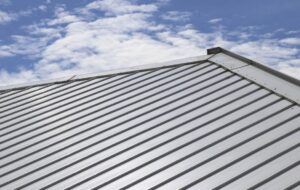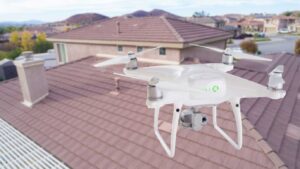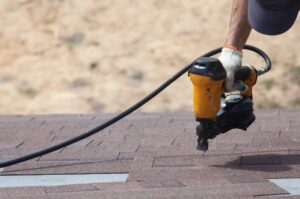As the weather finally cools down across Houston and Cypress, November becomes one of the best months for essential home exterior upkeep. While Texas doesn’t experience harsh winters like northern states, we still see temperature swings, seasonal storms, humidity, and wind that can wear down your siding over time. At Compass Roofing TX, our mission is to provide homeowners with honest, reliable exterior solutions backed by integrity and great customer service. From free inspections to siding repairs and full installations, we help homeowners protect their investment with clarity, transparency, and high-quality workmanship.
Because our values center on openness and responsibility, we aim to empower Houston homeowners with the knowledge they need to maintain their siding properly, before issues turn into costly repairs. With November’s cooler temperatures and typically drier weather, now is the perfect time to take care of your home’s siding before winter and early-spring storm season begins.
Below is your essential November siding maintenance checklist, built specifically for the Texas climate and for the types of siding we install, including vinyl, composite, wood, fiber cement, Hardie Board, and LP SmartSide.
Why November Is the Ideal Month for Siding Maintenance in Houston
Houston’s climate is unique. We deal with:
- High humidity nearly year-round
- Intense summer heat that breaks down materials
- Occasional heavy fall rainstorms
- Strong winter cold fronts and gusty winds
- Gulf moisture, mildew growth, and pollen buildup
November typically brings lower humidity, cooler temperatures, and fewer storms, making it an ideal maintenance month. This is when damage becomes easier to spot, repairs last longer, and preventative care sets you up for a smoother winter.
Whether you’re looking for siding maintenance Houston homeowners trust or simply want to prevent long-term deterioration, this checklist will help you stay ahead.
1. Clean Off Dirt, Mildew, and Pollen Buildup
Texas siding sees a lot of buildup from moisture, pollen, dust, and organic growth, and by November, the accumulation is noticeable.
Your steps:
- Use a garden hose and mild detergent to wash siding.
- Avoid high-pressure washing, which can damage caulking or panels.
- For vinyl and composite, low-pressure cleaning is enough.
- For fiber cement care tips, use a soft-bristle brush and avoid harsh chemicals that eat away coatings.
Why it matters:
Moisture + buildup = early degradation, warping, and even rot in wood-based materials. Cleaning siding before winter reduces the risk of moisture staying trapped during rainy months.

2. Inspect for Cracks, Gaps, and Warping
The hot Houston summer causes siding to expand, while fall brings contraction, often leaving behind cracks or loose sections.
What to look for:
- Warped vinyl planks
- Cracked fiber cement boards
- Gaps in wood siding
- Loose panels from the wind
- Deteriorated caulking around windows and edges
Even small gaps can let in moisture, leading to mold growth, interior leaks, and energy inefficiency.
At Compass Roofing TX, our team offers free siding inspections, making it easy for homeowners to catch small problems before they become major repairs.
3. Check for Moisture Damage and Rot (Especially for Wood Siding)
Houston’s humidity is unforgiving. If you have wood siding, whether traditional wood or engineered materials like LP SmartSide, November is the perfect time to check for moisture intrusion.
Check for:
- Soft spots
- Dark stains
- Bubbling paint
- Insect damage
- Areas where panels pull away from the house
Fiber cement and Hardie Board resist rot beautifully, but joints and caulking still need attention.
4. Re-Caulk and Seal Where Needed
Texas weather breaks down caulking faster than you’d expect, especially around:
- Windows
- Door frames
- Corners
- Seams
- Horizontal trim pieces
If you notice cracks or separation, re-caulk using an exterior-grade sealant. This is especially important for fiber cement siding, which relies heavily on proper sealing for long-term performance.
Sealing in November keeps winter moisture and wind from sneaking into your home’s envelope.
5. Look for Pest Activity
As temperatures cool, insects and small animals start looking for warm places to hide, including any gaps in your siding.
Inspect for:
- Small holes
- Gnaw marks
- Nesting materials
- Mud tubes (especially from termites)
Composite, vinyl, and fiber cement siding all resist pests better than traditional wood, but trim pieces and soffits can still be vulnerable.
6. Touch Up Paint or Finish
November is an ideal time for spot-painting because the temperature is a bit more moderate and the humidity is a lot lower.
- Fiber cement and Hardie Board: paint every 8–12 years, or touch up when you see paint fading.
- Wood siding: repaint or reseal to protect the material from moisture.
- Vinyl siding: does not require painting, but faded areas can be improved for aesthetic reasons.
Paint isn’t just cosmetic; it acts as a protective barrier in the Houston climate.
7. Schedule a Professional Siding Inspection Before Winter Storms
Even though Houston winters are mild, the combination of winter wind, storms, and temperature swings can turn a small siding issue into a major repair. Professional inspections can identify:
- Hidden moisture behind siding
- Incorrect installation
- Improper flashing
- Areas vulnerable to wind uplift
- Aging or failing panels
A free inspection from Compass Roofing TX can give you peace of mind heading into the winter months.
Protect Your Home Before Winter Arrives: Call Compass Roofing TX
Your home’s siding is one of your biggest defenses against Houston’s unpredictable climate. Whether you need fall siding upkeep, repairs, cleaning advice, or a full siding replacement, our team is here to help with honesty and expertise.
Schedule your free siding inspection today and let Compass Roofing TX prepare your home for the months ahead.



